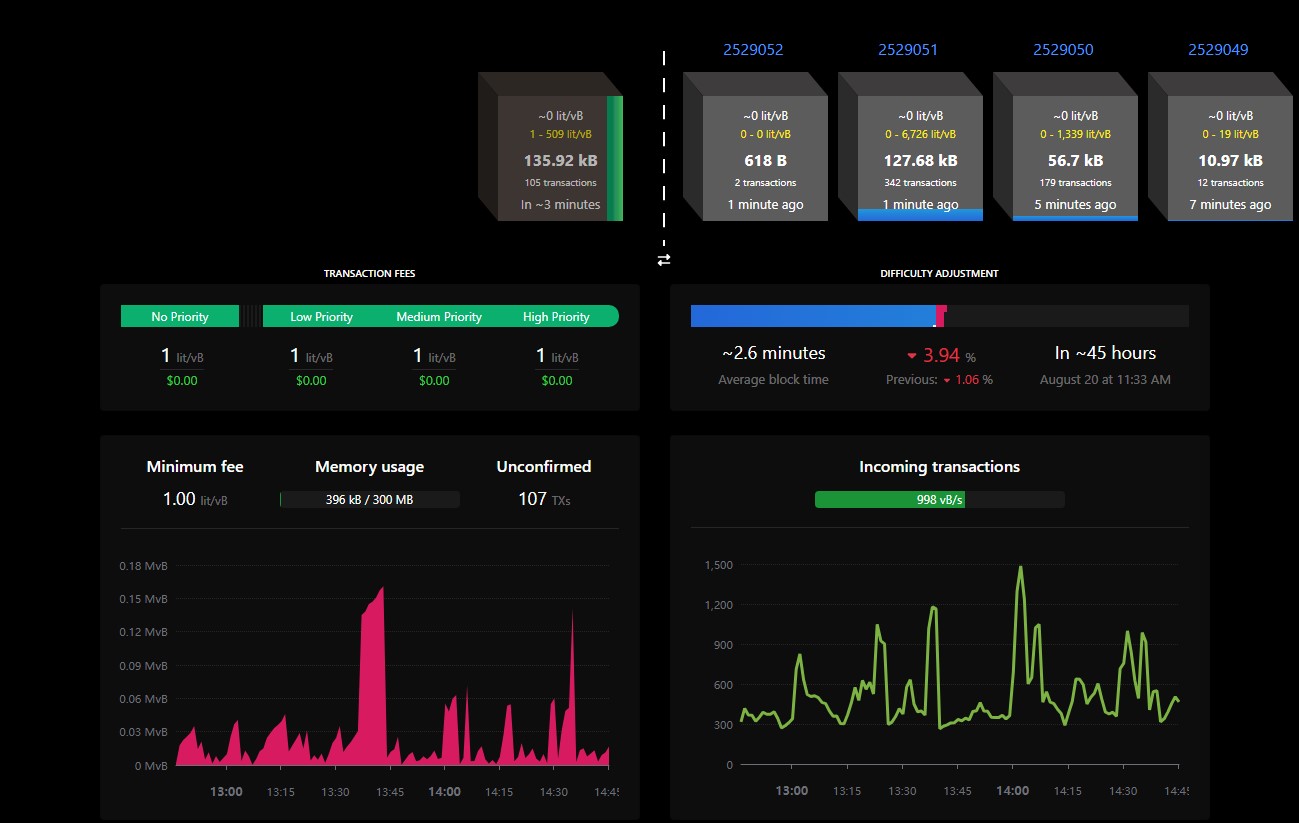Permissionless blockchains that buttress popular cryptocurrencies like Bitcoin and Litecoin have broadcast to the world that it’s possible to transfer value without relying on centralised third parties. This remarkable feet, while most useful in emerging economies so far, could increasingly find market fit in developed economies which have witnessed high inflation since 2020.
Permissionless blockchains are able to transfer value without relying on a concentrated number of third parties, which may block transactions, especially if the rule of law is shambolic. The components required for unstoppable decentralised payments are over a decade old now, with Bitcoin and Litecoin technology being early pioneers. Together, the combination of various decentralised cryptocurrencies, and what they bring to the table, is greater than the sum of its parts.
In this write-up, we’ll look at a high-level overview of these components and how they mingle, using the two most popular proof-of-work cryptocurrencies as an example.
Payments and trust
Payment systems normally operate using a small number of key economic agents, which in part ensure that only authorised transactions take place. For the system to function, the defacto gatekeepers must be trusted to perform their duties. The trust is bolstered by the rule of law, rules, regulations and guidelines which attempt to bring innovations into the ever-expanding role of government. Incentives and disincentives are coordinated by agents in order to maintain systems integrity, punishing agents that misbehave. However, since this system is fundamentally based on fallible human decision makers, bad behaviour can never be sufficiently ruled out.
On the other hand, cryptocurrencies like Bitcoin and Litecoin, were designed to operate using another model of trust. This model does not rely on the rule of law and regulations, but on a form of automated self-auditing. Instead, Litecoin relies on two features: open accessibility and incentives for good behaviour.
Accessibility, or ‘permissionlessness’, is a necessary prerequisite that eliminates the risk that a gatekeeper could exert power to their advantage. And since the network can be openly accessed by anyone, the need for strong incentives to mitigate misbehaviour is amplified. Both features are important, but it’s arguable that their combination is absolutely necessary for permissionless blockchains to function as intended, and in perpetuity.
Permissionlessness cryptocurrencies
In permissionless cryptocurrencies, anyone can use the payment system without restriction. Additionally, anyone can contribute to maintaining the operations of the payment system. If any essential role is restricted in some way, then players could position themselves to become eventual gatekeepers, thereby opening the possibility for abuses of power.
One role in a blockchain is the creation of new blocks to add to the chain. With both Bitcoin and Litecoin, miners perform that role. They validate transactions by, for instance, making sure that the same litecoin has not been spent more than once, and add new blocks of valid transactions to the chain. Since the network is openly accessible, anyone can choose to be a miner. Validation is another vital function for any payment system. If validators cannot be trusted, they could authorise or exclude otherwise invalid transactions at the expense of other participants.
Permissionless blockchains are transparent, which means anyone can observe the ledger online, directly. This is another necessary state for ledger integrity, so that anyone who proposes a new block can verify that transactions are both feasible and legitimate. The transparency mechanism lends itself to a tamper-proof system which is effectively a form of automated self-auditing.

If governance of the blockchain is centralised, then it defeats the purpose of a public blockchain. In other words, if a small group of individuals can make changes that affect the whole system, then the entire point of having a blockchain in the first place is null and void. Both Bitcoin and Litecoin do not have a single owner, though they differ in that Litecoin’s founder is known.
Governance is open to all willing participants through Bitcoin or Litecoin Improvement Proposals (BIP/LIP). However, implementing core changes to the codebase is restricted to a smaller number of developers. That said, any changes developers make must be accepted by miners and other nodes in the system in order to influence the network’s trajectory. In this way, all parties in the network contribute to development and adding or removing rules.
Economic incentives
Besides open accessibility, permissionless blockchains need good economic incentives to ensure that participants behave appropriately, reducing possible attack vectors on the network. In legitimate projects, incentive alignment is achieved through issuance and usage of a cryptocurrency or token. For instance, Litecoin with an upper case ‘L’ tends to refer to the system, while litecoin, in lower case, refers to the asset; though this unwritten rule is not hard and fast.
For miners to have an incentive to add blocks to the chain, successful miners receive a combination of freshly minted litecoin and fees included by network users. In Litecoin’s case, miners also receive Dogecoin rewards since the two cryptocurrencies are ‘merge-mined’ together, increasing the incentive for network integrity. Rewards provide miners an incentive to conduct work honestly, since only accepted blocks can contribute to their profits.
Alternative trust
The interplay of both permissionlessness and sound economic incentives create the model of trust. Their importance is illustrated in both Bitcoin and Litecoin miners.
To minimize the need to trust a small set of miners, Litecoin relies on a consensus algorithm that distributes block creation. Would-be miners compete to guess or solve a mathematical puzzle, which results in a solution every two and a half minutes. Through a process of trial and error, anyone with the appropriate hardware has a shot at solving the problem. Once the solution for the block-in-progress is found, other miners easily verify that the solution is correct, and the next block comes along.
The likelihood of being first to guess the correct answer is more or less proportional to the processing power at the disposal of a miner.
To understand why distributed proof-of-work validation is necessary for decentralised trust, imagine that you are concerned that a football referee might be corrupt and could affect the outcome of a match you care about. One way to reduce the impact of a corrupt referee would be to have a large pool of potential available referees. Every two and a half minutes or so, a new referee would be switched into the game, who is subsequently conducting his role all the while being reviewed by his peers. If the larger pool of referees agrees with outcomes, the game continues; if not, the game restarts at a previous state. The process means that the impact of a referee is fairly small, and the incentive to misbehave is also small.
While this would be cumbersome for football or sports, it’s arguable that proof-of-work consensus is highly desirable for a global monetary regime. In fact, it’s arguable that the trade-offs necessary for high integrity in an open monetary system are not only justified but eminently desirable. At least, that’s the argument Bitcoin and Litecoin are making.
Conclusion
The main innovation of permissionless blockchains like Litecoin and Bitcoin are application-specific. Their purpose is to solve the problem of corruptible money, and so far, these proposals have worked flawlessly. Their technological and cryptographic primitives had been known for years, but by combining open access incentives for good behaviour, an entirely new trust model came into existence. This iteration on money raises important questions for permissioned federated systems which rely on third-party trust. Indeed, permissioned systems remove a key innovation, and must therefore compensate in some other way, though none have proven superior to the simple and elegant proof-of-work consensus mechanism so far.
While benefits such as instant programmability and efficiency are often touted, there is little evidence to suggest that a permissioned distributed ledger is better in practice, at least when it comes to considering what works best for a global monetary regime.
Join the telegram channel for updates, charts, ideas and deals.
Did you like the article? Share it!


